Smell is a critically important sense for many animals. It may help them hunt or forage for food, find a mate, keep safe from danger, communicate with others, and more. That’s why having a keen sense of smell can be a huge advantage in the wild.
There are many factors that determine how strong and accurate a species’ sense of smell is. Scientists look at the size of certain organs like the olfactory bulb, the number of olfactory receptor cells in the animal’s nose, the number of olfactory genes, and special olfactory abilities to determine how well an animal can smell the world around them. So, which animals have the strongest and best sense of smell? In no particular order, find out below.
1. African Elephants
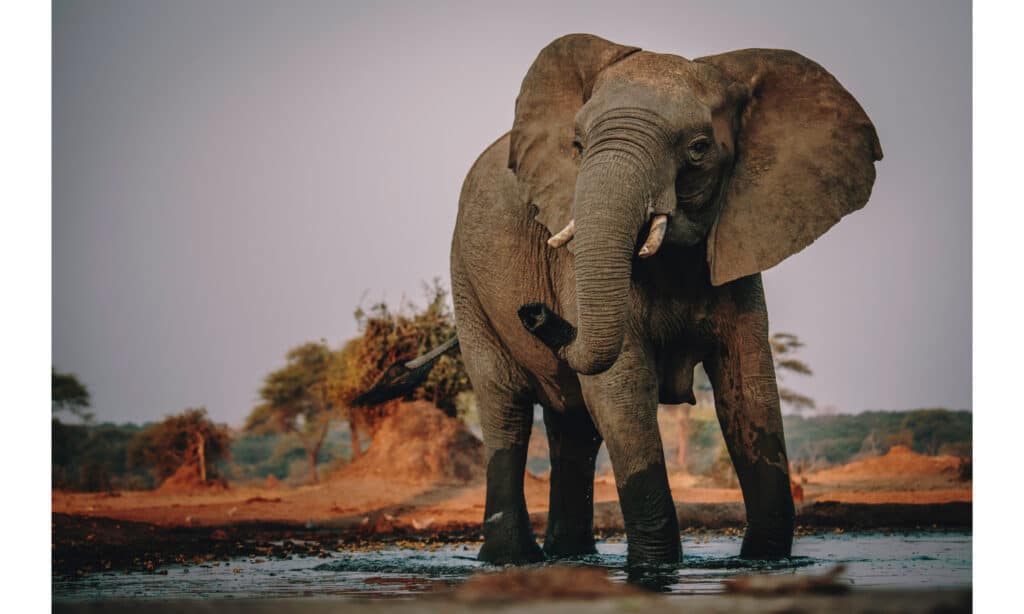
African elephants have the strongest sense of smell of any studied species.
©iStock.com/fotografie-kuhlmann
An African elephant’s trunk measures up to around 7 feet long. With such a massive nose, it’s no surprise that these pachyderms have more olfactory receptor genes than any known species. African elephants have 2,000 olfactory receptor genes, making them the animals with the best-known sense of smell. Their sense of smell is about twice as strong as a dog’s, and five times stronger than that of humans.
Scientists have shown that African elephants can use their extraordinary noses to identify quantities. In one study, they were able to distinguish between different quantities of food using smell alone. Elephants also use their sense of smell to learn about one another. They can sniff out information about the health, social status, and location of another elephant.
2. Bloodhounds
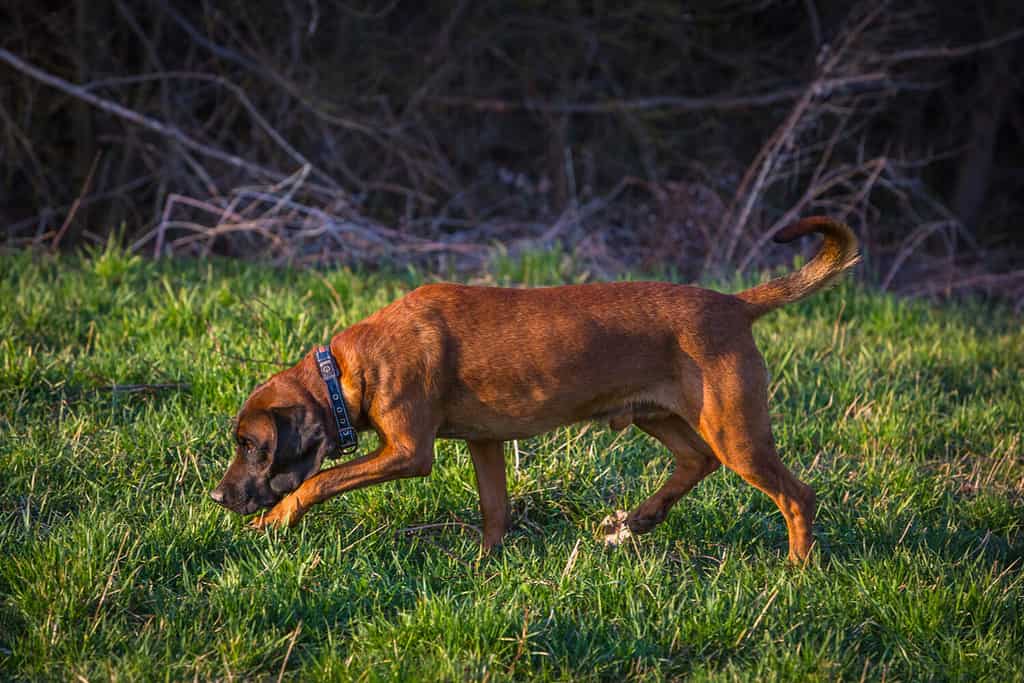
The tracking ability of a bloodhound can be used as evidence in a United States court of law.
©msgrafixx/Shutterstock.com
If you have ever had a dog, you probably have a good idea of just how powerful their sense of smell is. Smell is a dog’s most well-developed sense, and the breed with the strongest sniffing ability is none other than the bloodhound. This tracking dog is able to “see” odor profiles in more detail than a human being can get from looking at a picture. Once they pick up a scent, they follow it relentlessly.
3. Catfish
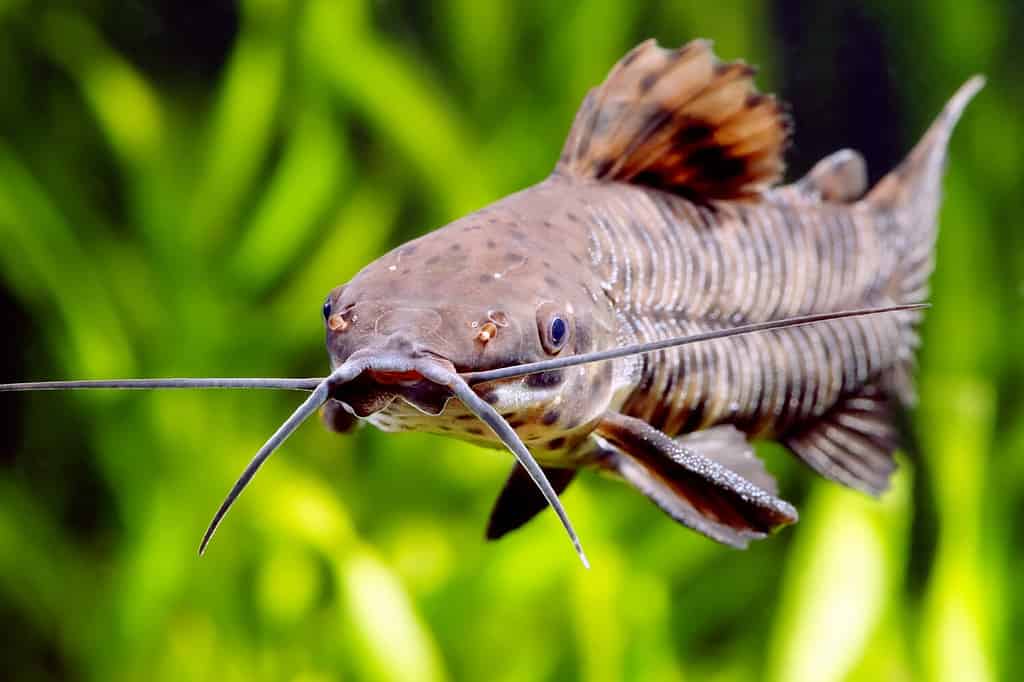
Fishermen often use scented bait to capture catfish.
©Grigorev Mikhail/Shutterstock.com
Compared to the mighty African elephant and the famous bloodhound, the catfish might seem unassuming in its smelling powers. Don’t be fooled! Catfish are among the best underwater sniffers. Fish detect scents in the water via folds of sensitive tissue in an organ called a rosette inside their nostrils. Some catfish species have more than 140 folds in their olfactory tissues, whereas other fish species tend to have fewer than 100 folds, and often less than 10.
4. Cows
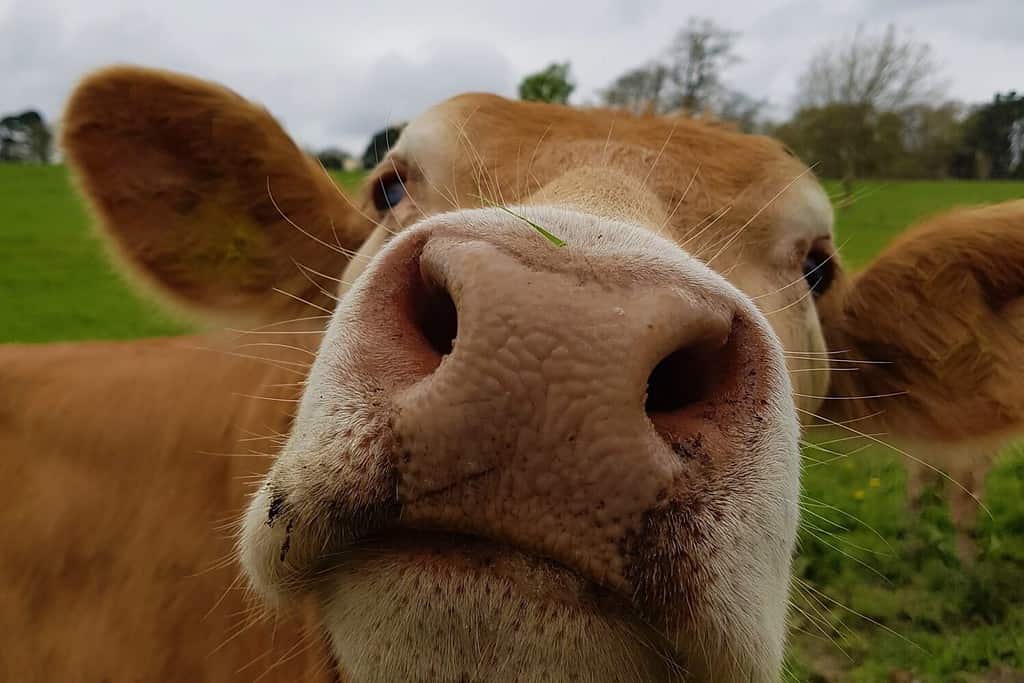
Cows have more olfactory receptor genes than dogs.
©JTA1974/Shutterstock.com
Cows have an excellent sense of smell. Being prey animals, they are able to detect signs of danger, such as the odor of a predator or the stress chemicals of a fellow cow, from several miles away. A cow’s keen sense of smell may also help it detect poisonous plants to avoid.
5. Elephant Shrews
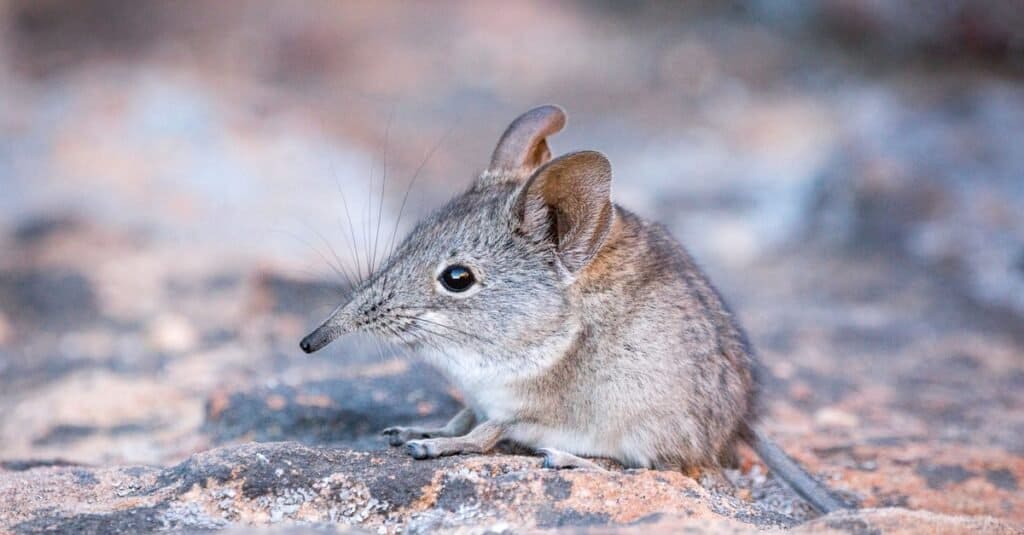
Like an elephant’s trunk, an elephant shrew’s proboscis is highly sensitive.
©Nadine Klose/Shutterstock.com
Like the majestic pachyderm, this shrew was named after, the elephant shrew has an acute sense of smell. This little mammal has a long snout that is flexible like an elephant’s trunk. Elephant shrews use their highly sensitive proboscis to hunt for insects, berries, and other foods in their habitat.
6. Hedgehogs
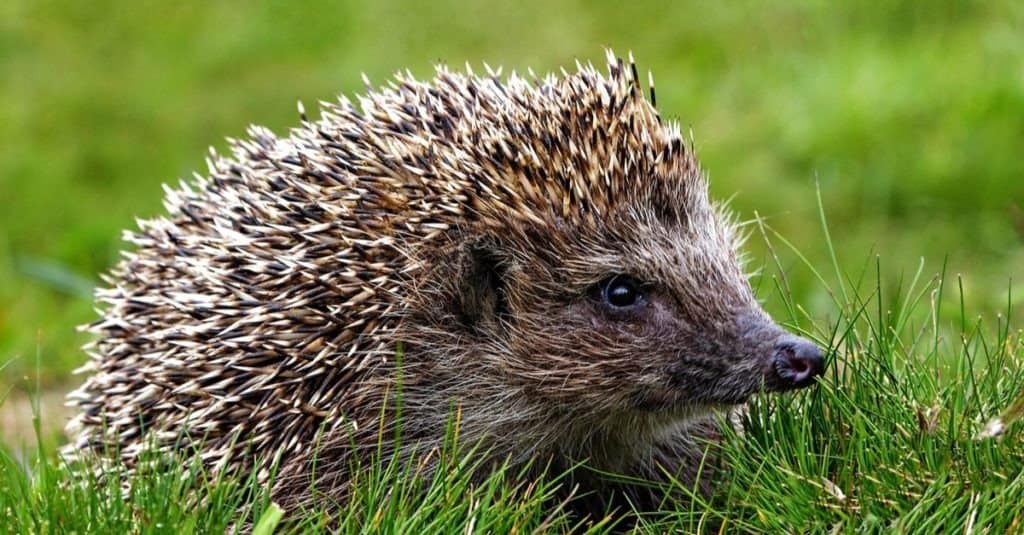
Smell is the most important sense to a hedgehog.
©SakSa/Shutterstock.com
Hedgehogs are small mammals with a mighty sense of smell. Their long snout moistens at the tip when they pick up a new scent. They sniff the air constantly to find food, identify mates and enemies, and navigate their world. Hedgehogs can even sniff out an insect that is buried under a few inches of soil.
7. Honey Bees
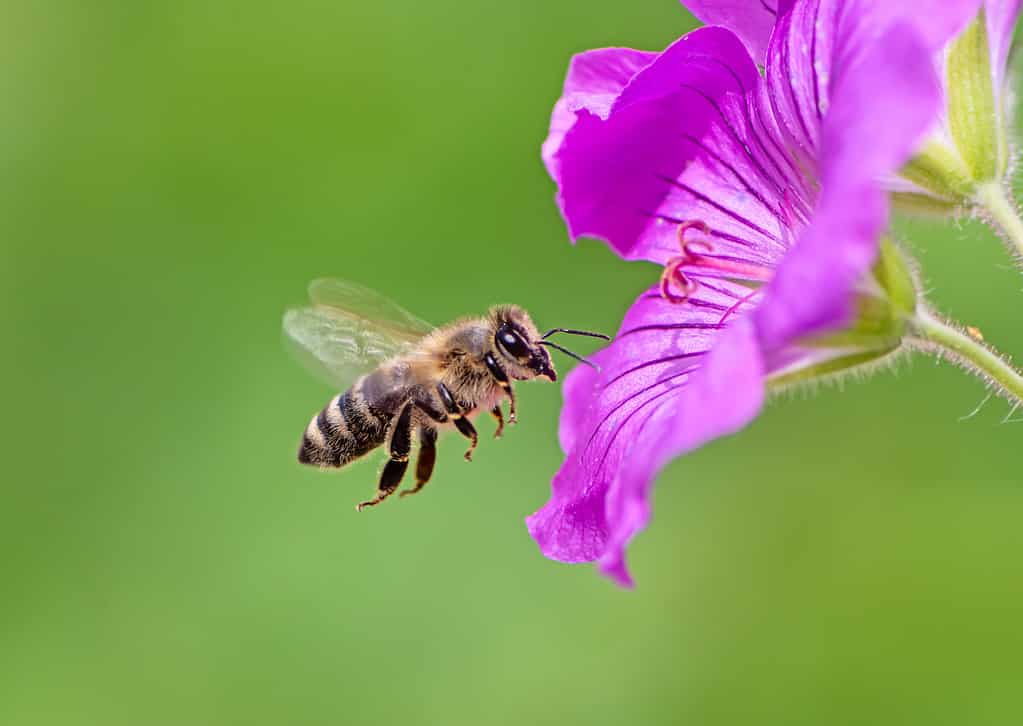
A honey bee’s sense of smell is about 100 times stronger than that of a human.
©iStock.com/manfredxy
You might wonder, how can a honey bee be on this list when bees don’t have noses? Many insects sense odors with their antennae, which have microscopic receptors called sensilla. Sensilla can detect odor molecules in the air that pass over them. Honeybees have more receptors on their antennae than most other insects do. This allows them to detect communication pheromones from other bees in their colony.
8. Horses

A horse’s keen sense of smell affects how it interacts with its owners and caretakers.
©Callipso88/Shutterstock.com
Horses have highly developed olfactory organs. They use scent to distinguish between other horses in their environment and to gather information about the sex, health, and status of individuals. One study has shown that horses can use their sense of smell to determine the emotional status of a human. With 300 million olfactory receptors, it’s no wonder that smell is such an important sense to a horse.
9. Kiwis
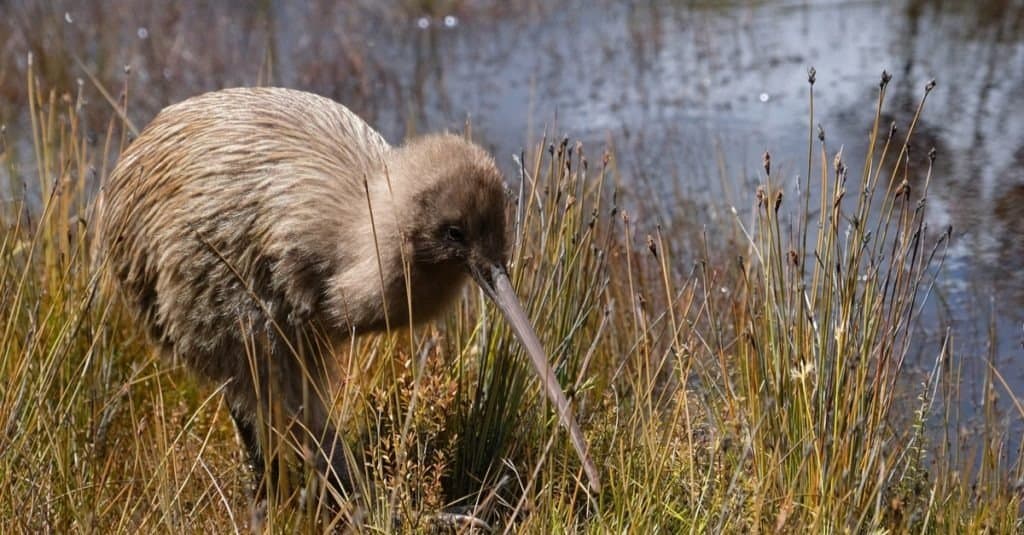
The kiwi’s unusually keen sense of smell gives it an advantage over birds that can fly.
©Vee Snijders/Shutterstock.com
The national bird of New Zealand has an exceptional sense of smell. Among birds, kiwis have one of the largest olfactory bulbs for their size. The kiwi is the only bird that has nostrils at the end of its beak. Such nostrils help this flightless bird find insects under the soil. Kiwis are nocturnal ground hunters and they do not use their eyes as much as other birds do. Instead, their nose guides them through the dark.
10. Olms
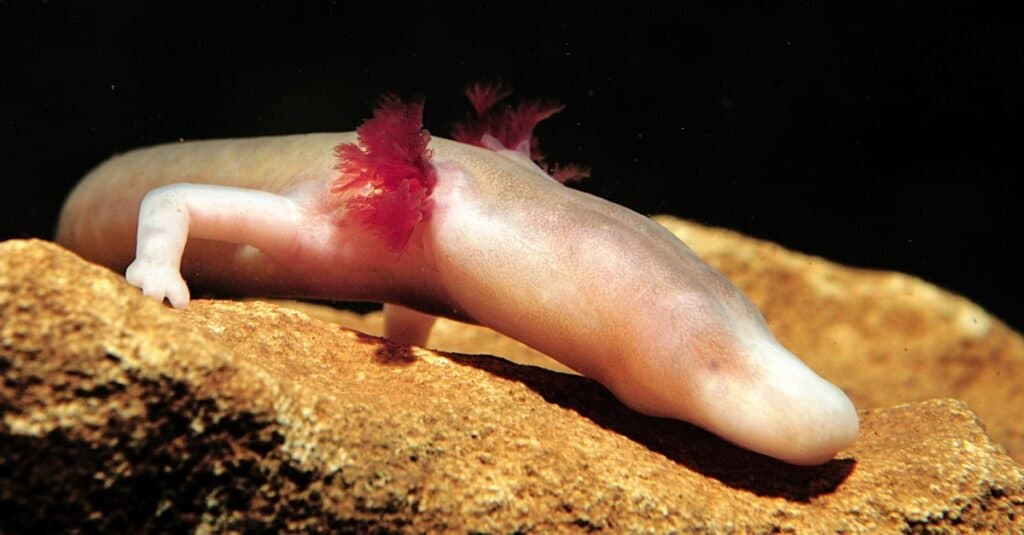
Olms are blind and they rely on their snout to find food.
©lucacavallari/Shutterstock.com
Among amphibians, few can beat the olm in its sense of smell. These cave-dwelling creatures can easily sniff out even tiny quantities of a substance in their underwater environment. Scientists think the olm’s visual blindness in its dark, underground habitat contributes to its heightened olfactory abilities.
11. Opossums
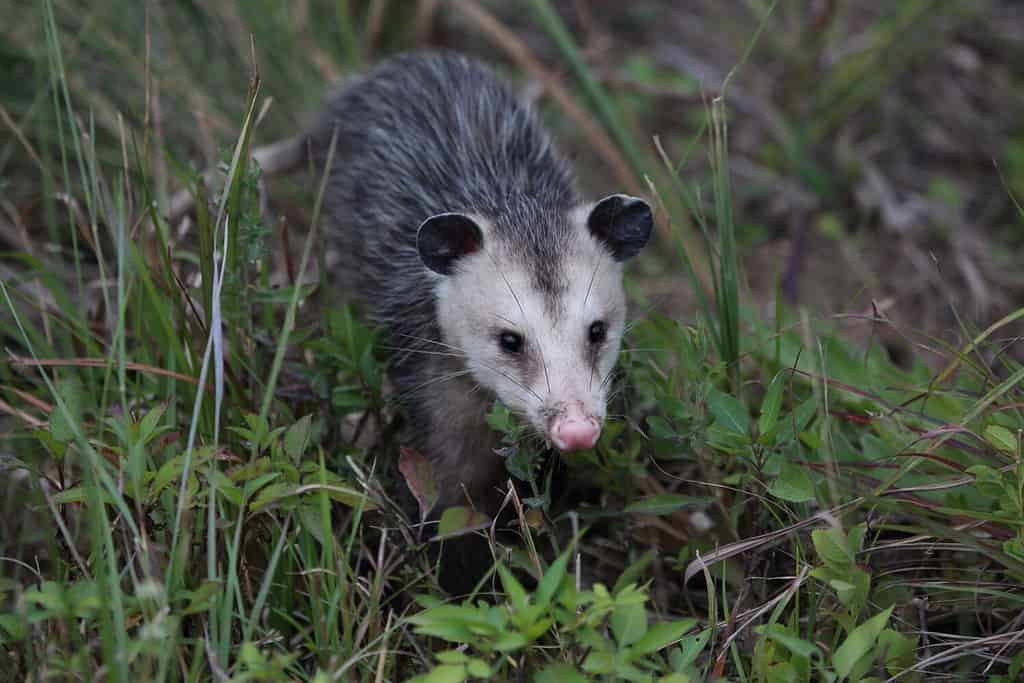
Opossums use their great sense of smell to find fruits, invertebrates, and other foods to eat.
©Arend Trent/Shutterstock.com
You might notice something that most of the animals on this list have in common, and that is a long snout. A long nose can fit more olfactory receptor cells than a short or small nose can. The opossum’s lengthy snout bestows it with an exceptional sense of smell, which it uses to forage and hunt for food. These marsupials are omnivores and eat a wide variety of foods, but there are some smells, like garlic and molasses, that their sensitive noses cannot stand.
12. Pigs

In the wild, pigs spend much of their time rooting around with their powerful snouts.
©Wendy M. Simmons/Shutterstock.com
Pigs are considered to have some of the most powerful noses among domesticated animals. In the wild, pigs spend much of their time rooting around in the dirt, sniffing out tasty treasures. The unique shape of their snout allows them to sniff deeply into the ground. With their well-developed olfactory organs, pigs can smell food that is 25 feet under the dirt. That is why they are prized as truffle hunters. Pigs can even detect odors that humans are unable to smell.
13. Polar Bears
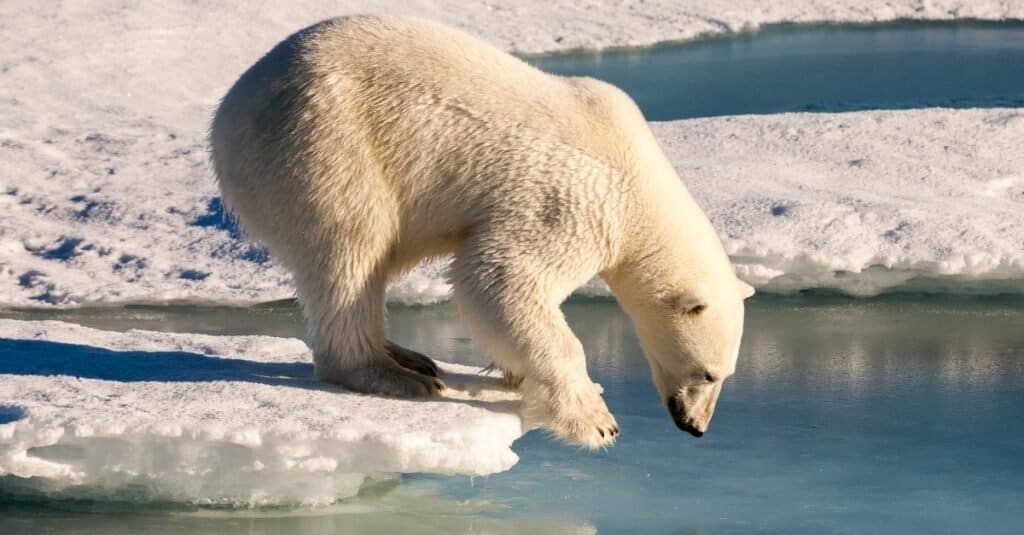
A polar bear needs its incredible sense of smell to find enough food to survive in the tundra.
©Mario_Hoppmann/Shutterstock.com
Bears are known to have an incredible sense of smell, and the polar bear is the most exceptional among them. A polar bear can smell a seal on the ice from 20 miles away! They can sniff out seals that are hiding under thick layers of snow. This ability is essential for finding prey in the harsh Arctic tundra.
14. Rats

Some African giant pouched rats have been trained to sniff out landmines and perform other important tasks with their sensitive noses.
©iStock.com/Farinosa
Rats are known for their precise sense of smell. One study has shown that they can smell in stereo, meaning that they can tell through smell alone where an object is. Their olfactory abilities are so accurate that they are trained to sniff out landmines. Rats have also been trained to smell such diseases as tuberculosis.
15. Salmon
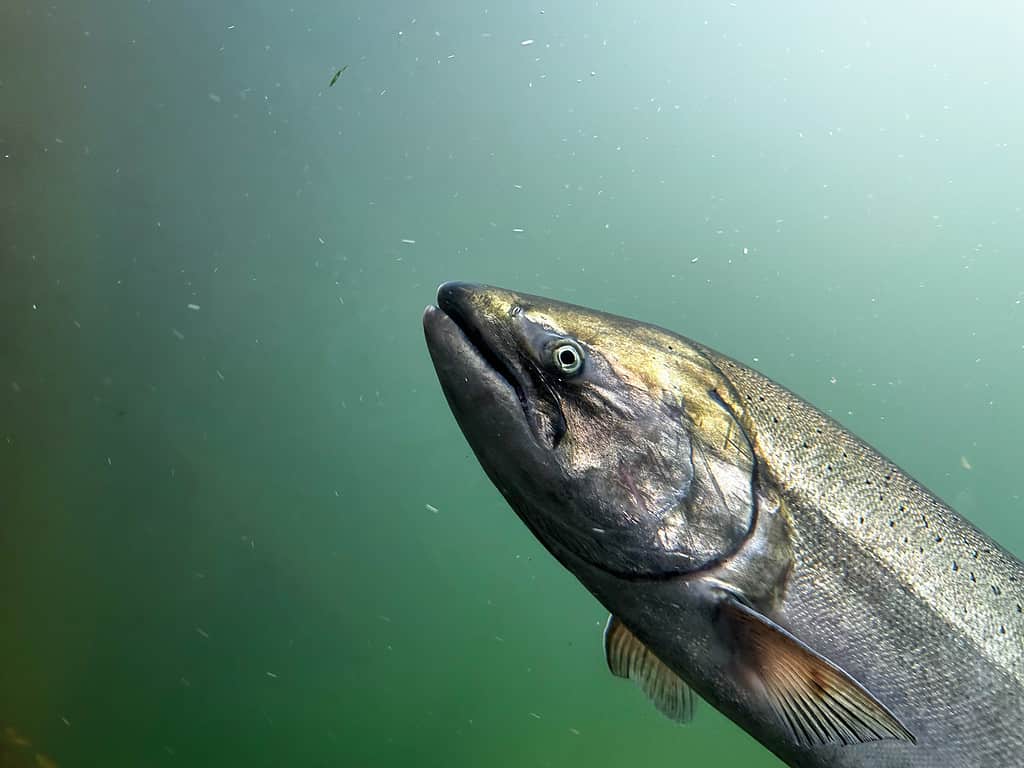
Even a tiny drop of an odorous substance can be enough to halt a salmon’s migration.
©Heather Ray/iStock via Getty Images
The salmon’s famous homing migration would not be possible without its remarkable sense of smell. When salmon are young, they learn specific scents from their birthing place, and it is those odors that they follow to return home each year. Salmon have such a fine-tuned sense of smell that they can detect an odor in one part per 80 billion parts in the water.
16. Sharks

The
great white shark
has the largest olfactory bulb of any shark species.
©iStock.com/Martin Heyn
Sharks have such a great sense of smell that they are sometimes called “swimming noses.” A great white shark can smell certain substances in the water at about 1 part per 10 billion parts water. This helps them track and hunt wounded or dying animals.
17. Silk Moths

Silk moths’ antennae are lined with olfactory receptors.
©Ket Sang/Shutterstock.com
Like the great white shark, the small but amazing silk moth can detect odors in parts per billion. Silk moths use their feather-like antennae to sense odors in the air. If even just a few molecules of a mating chemical pass through the sensitive sensilla on their antennae, silk moths can pick up the scent.
18. Snakes
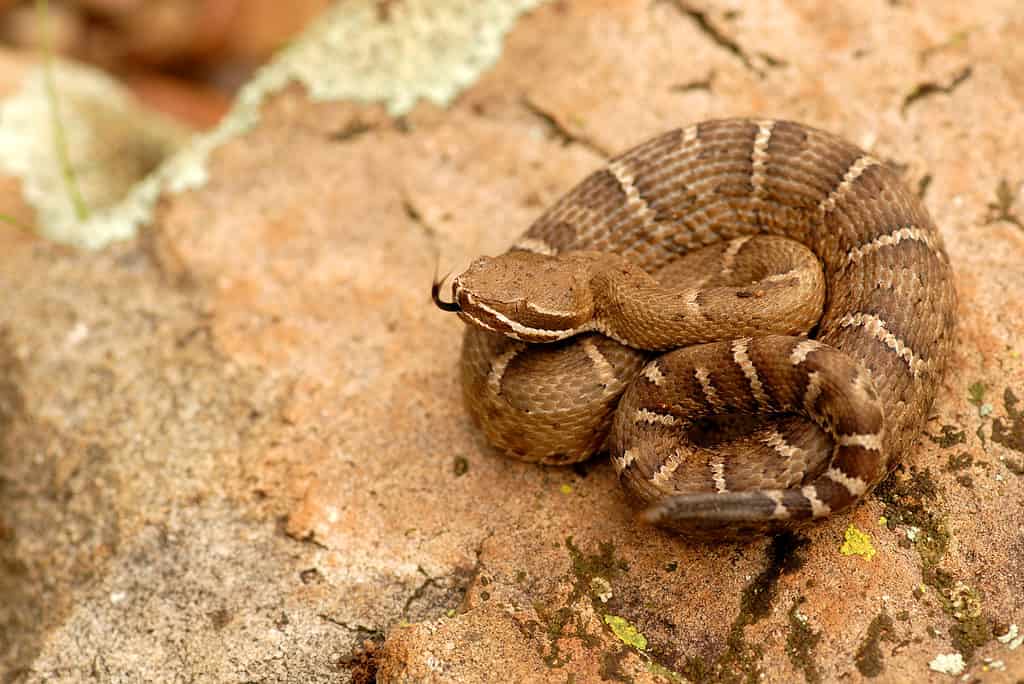
Rattlesnakes
can flick their forked tongue to detect odors.
©Rusty Dodson/Shutterstock.com
Snakes have an acute sense of smell thanks to a highly specialized olfactory system. An organ located above the roof of a snake’s mouth (the vomeronasal organ) allows it to smell through its mouth. Snakes also have a regular nose that they smell through. If something smells particularly interesting, they may flick their tongue to get a better smell with their vomeronasal organ.
19. Star-Nosed Moles
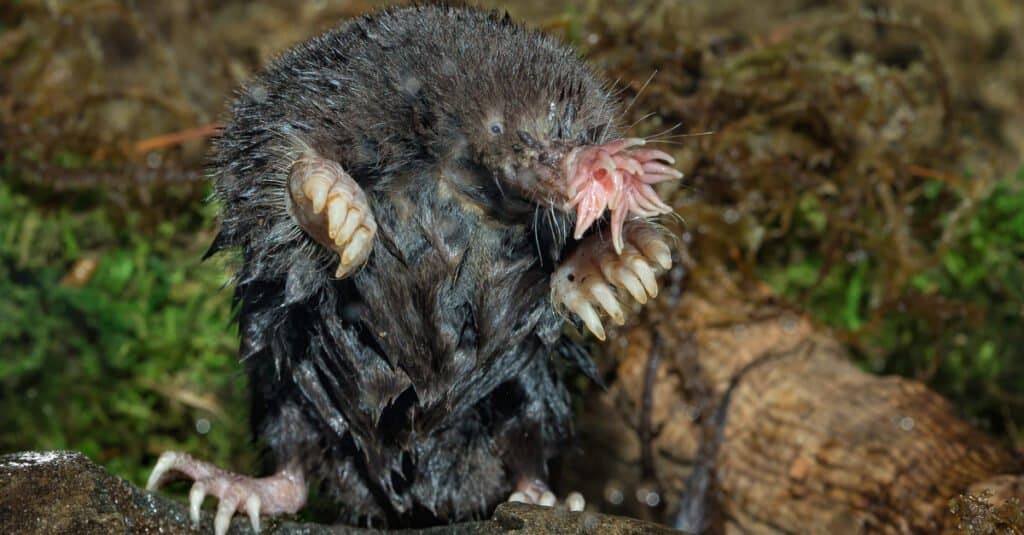
The star-nosed mole uses its unique nose to smell prey underwater.
©Agnieszka Bacal/Shutterstock.com
Star-nosed moles are chock-full of remarkable traits! These moles are known for their amazing sense of touch and their record-breaking eating speed. They also have a very refined sense of smell that allows them to smell underwater — a unique skill among mammals. While hunting in the water, star-nosed moles blow bubbles out of their nostrils and then quickly sniff the bubbles back in to gather scent molecules from their prey.
20. Turkey Vultures
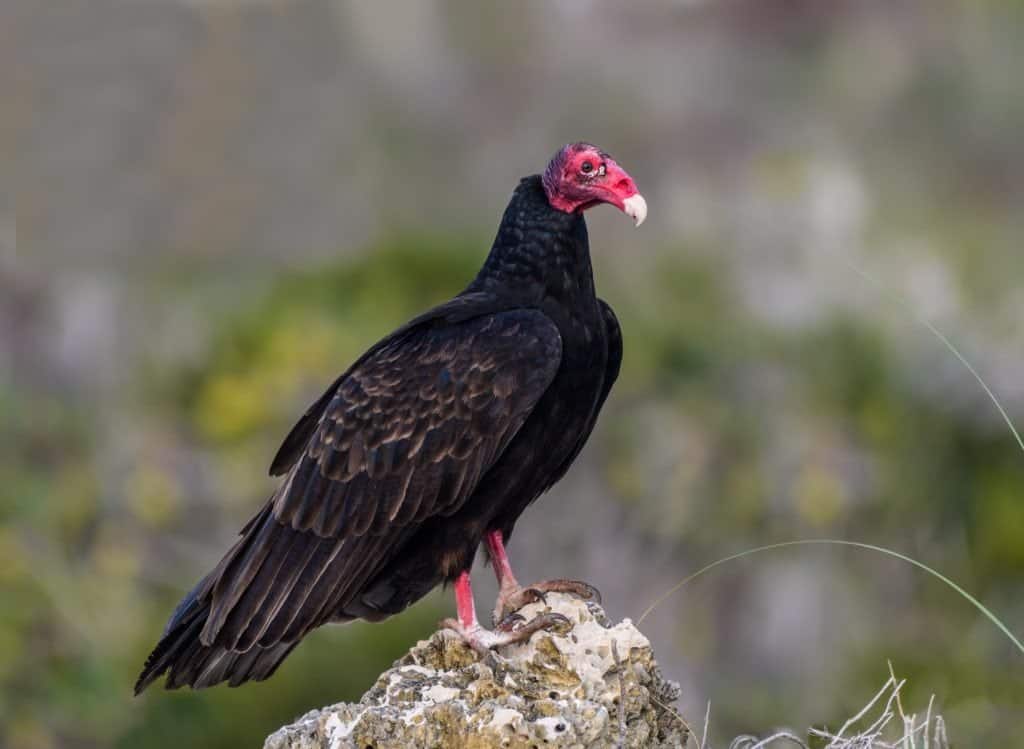
Turkey vultures use their extraordinary sense of smell to find carrion.
©FotoRequest/Shutterstock.com
Last but certainly not least is the astounding turkey vulture. Since this large bird specializes in eating carrion, it is no surprise that the turkey vulture has an exceptional sense of smell to help it find its meals. A turkey vulture can smell carrion from over a mile away. Turkey vultures have the largest olfactory system of any bird. In fact, they have more mitral cells (cells that deliver olfactory information to the brain) than any other studied species of animal.
Summary of the Top 20 Animals with the Strongest and Best Sense of Smell
| Number | Animal |
|---|---|
| 1 | African Elephant |
| 2 | Bloodhound |
| 3 | Catfish |
| 4 | Cow |
| 5 | Elephant Shrew |
| 6 | Hedgehog |
| 7 | Honey Bee |
| 8 | Horse |
| 9 | Kiwi |
| 10 | Olm |
| 11 | Opossum |
| 12 | Pig |
| 13 | Polar Bear |
| 14 | Rat |
| 15 | Salmon |
| 16 | Shark |
| 17 | Silk Moth |
| 18 | Snake |
| 19 | Star-nosed Mole |
| 20 | Turkey Vulture |
The photo featured at the top of this post is © paula french/Shutterstock.com
Thank you for reading! Have some feedback for us? Contact the AZ Animals editorial team.







